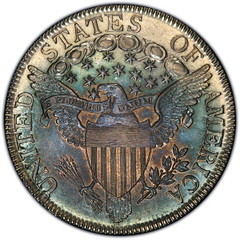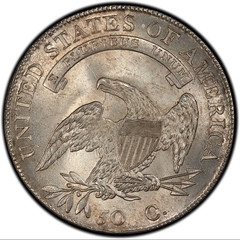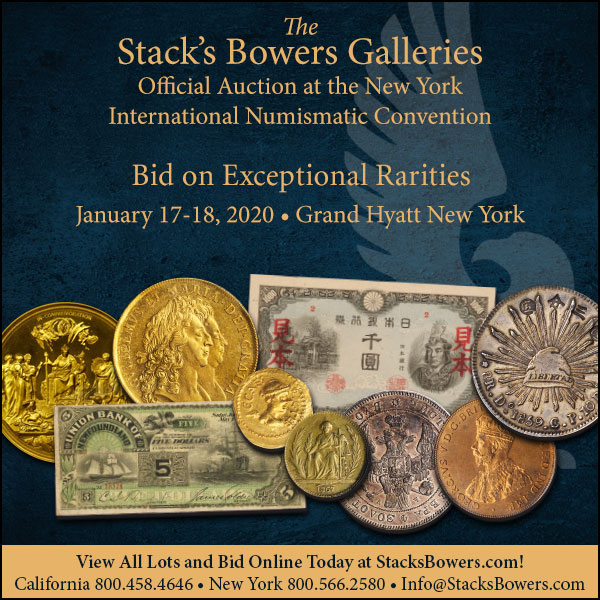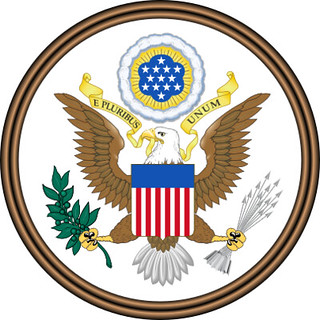
PREV ARTICLE
NEXT ARTICLE
FULL ISSUE
PREV FULL ISSUE
SYMBOLS ON AMERICAN MONEY: THE EAGLEPablo Hoffman of New York City forwarded this excerpt from the 1957 pamphlet Symbols on American Money by Stephen L. Goldsmith via the Delancey Place blog. Thanks! -Editor "[It is] the reverse side of the $1 note that holds the most meaning. Our Founding Fathers were deeply aware of the importance of symbols. In fact before the adjournment of the Continental Congress on July 4, 1776, a committee was appointed to create a seal that would symbolize America's ideals. The committee included John Adams, Thomas Jefferson and Benjamin Franklin—three of the drafters of the Declaration of Independence. "However, designing the seal was a difficult and controversial undertaking that spanned six years and three committees. The final proposal as accepted by Congress was submitted on June 13, 1782 by Charles Thomson, a prominent Philadelphia merchant and secretary of the Continental Congress. He is credited with finalizing the design—unifying the ideas of the three committees, their consultants and artists.
"To solve the mystery of what these symbols mean, we go directly to the source, Charles Thomson who presented his written description of the Great Seal to Congress on June 20, 1782. The most striking feature of the front of the seal is in Thomson's words 'an American Eagle on the wing and rising.' The eagle flies freely, independent of any support, holding in its left talon 13 arrows signifying war and in its right talon an olive branch signifying peace. "You may think which talon holds the arrows and which holds the olive branch is of little consequence. But in the language of symbols it is of great significance. The right side signifies dominance. Therefore arrows depicted in the eagle's right talon can be interpreted as a warlike gesture. Failure to adhere to this concept almost got the United States into a war. "From 1801 to 1807, the eagles on the backs of our silver coins were inadvertently shown with the arrows in the right talon instead of the left. Some European journalists and diplomats interpreted this as an expression of American belligerence and tried to use it as grounds for promoting war with the United States. In response, a new design was created in 1807 for the backs of American silver coins. This time the olive branch—representing peace—was placed in the dominant right talon, putting an end to the journalistic saber rattling. The eagle holds a banner in its beak with the words 'E Pluribus Unum', which Thomson translates to mean 'Out of many one.' "Thomson goes on to explain that the shield or escutcheon on the eagle's breast is composed of two major parts: a horizontal blue band which represents Congress extending across the top third of the shield, supported by 13 red and white vertical stripes, which represent the 13 original colonies. The 13 stars above the eagle represent a new constellation taking its place in the universe in the same way that a new nation takes it place among the other sovereign nations. The colors also have significance. Blue stands for vigilance perseverance and justice; red signifies hardiness and valor; and white indicates purity and innocence." For illustration, here are the reverses of 1807 Draped Bust and Capped Bust half dollars. Images from PCGS CoinFacts. -Editor   Can anyone recommend a good article or chapter in numismatic literature about the topic of the arrows and eagle talons? The Newman Portal has a large number of references to the talons, but I found it hard to narrow down the search. To read the complete article, see:
 Wayne Homren, Editor The Numismatic Bibliomania Society is a non-profit organization promoting numismatic literature. See our web site at coinbooks.org. To submit items for publication in The E-Sylum, write to the Editor at this address: whomren@gmail.com To subscribe go to: https://my.binhost.com/lists/listinfo/esylum All Rights Reserved. NBS Home Page Contact the NBS webmaster 
|
